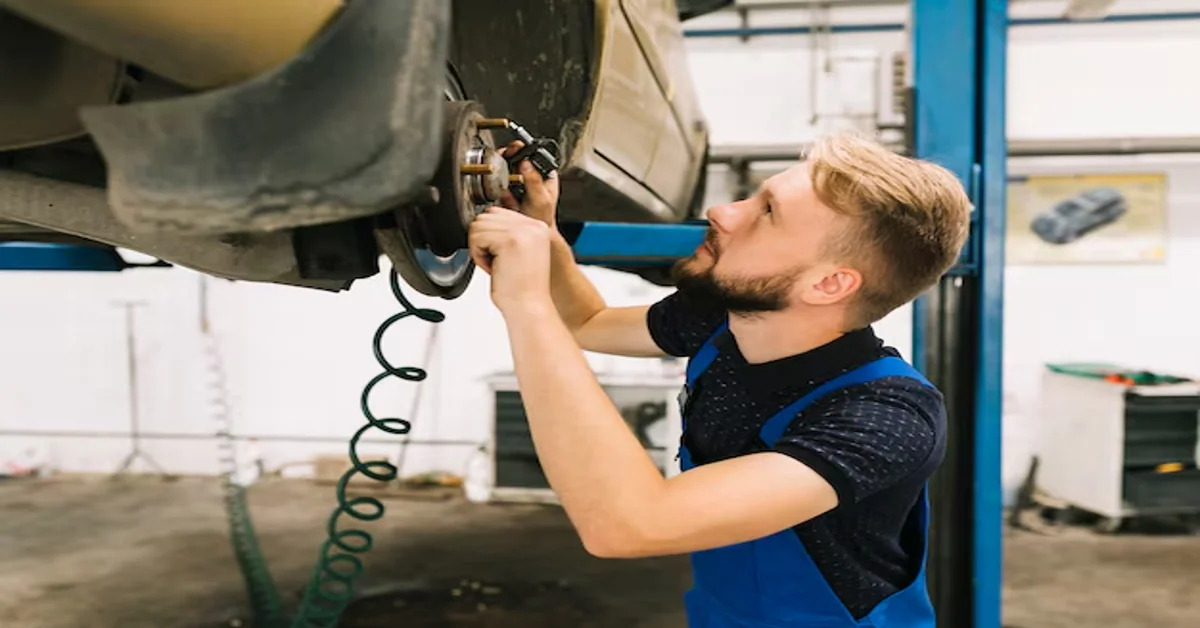When you think about your vehicle’s suspension system, the sway bar often doesn’t get the attention it deserves. Most drivers focus on major components like shock absorbers and struts, overlooking the importance of sway bar links. These small yet mighty parts play a crucial role in ensuring stability and control while driving. If you’ve ever experienced body roll during sharp turns or felt like your car was swaying excessively, it’s time to take a closer look at these unsung heroes of automotive engineering. Let’s dive into what sway bar links are, how they work, and why keeping them in top shape is essential for a smooth ride.
Symptoms of Bad Sway Bar Links
Recognizing the symptoms of bad sway bar links is key to maintaining your vehicle’s performance. One common sign is noticeable body roll during turns, which can make handling feel less responsive. If you find yourself leaning excessively when cornering, it’s time to investigate further.
Another symptom is a clunking noise coming from the suspension while driving over bumps or uneven surfaces. This sound often indicates that the sway bar link has worn out and isn’t doing its job effectively.
You might also experience alignment issues if your sway bar links are failing. Uneven tire wear or a steering wheel that feels off-center can signal underlying problems in your suspension system, including faulty sway bar links needing attention.
What Is a Sway Bar?
A sway bar, also known as an anti-roll bar, is a crucial component of your vehicle’s suspension system. Its primary purpose is to reduce body roll during cornering or when driving over uneven surfaces. This helps maintain better control and stability while improving overall handling.
Typically made from steel or other sturdy materials, a sway bar connects the left and right wheels of a vehicle. By distributing weight evenly between the two sides, it ensures that both tires maintain contact with the road surface. This connection allows for smoother rides and enhanced traction.
Sway bars come in various sizes and shapes tailored to different vehicles and driving conditions. Whether you’re navigating tight corners or cruising down the highway, this unsung hero quietly works behind the scenes to keep you safe on the road.
What Are Sway Bar Links?
Sway bar links are essential components of your vehicle’s suspension system. They connect the sway bar, also known as an anti-roll bar, to the vehicle’s chassis and suspension. This connection allows the sway bar to perform its function effectively.
By linking both sides of the suspension together, it help reduce body roll during turns. When you navigate a corner or make sudden maneuvers, these links keep your vehicle stable and improve handling.
Typically made from metal with rubber bushings for flexibility, it should be robust enough to withstand various driving conditions. Over time, however, they can wear out due to stress and exposure to elements like dirt and moisture. Regular checks can help ensure they remain in good condition for optimal performance.
What Do Sway Bar Links Do?
Sway bar links play a crucial role in your vehicle’s suspension system. They connect the sway bar to the chassis and control arms, helping stabilize your car during turns. This connection minimizes body roll, allowing for improved handling and a smoother ride.
When you navigate corners or uneven surfaces, sway bar links work in tandem with other suspension components. They ensure that weight is distributed evenly across all four wheels, enhancing traction and stability. Without them, your vehicle would feel unsteady and unpredictable.
By maintaining this balance, sway bar links contribute significantly to overall safety while driving. A well-functioning set of sway bar links promotes better road contact and responsiveness, making every journey more enjoyable.
Signs of Bad Sway Bar Links
Bad sway bar links can manifest in several noticeable ways. One of the most common signs is a clunking noise when driving over bumps or uneven surfaces. This sound often indicates that the links are worn out and not providing the needed support.
Another sign to watch for is poor handling, especially during turns. If your vehicle feels unstable or tends to lean excessively, it could be due to failing sway bar links struggling to maintain proper suspension alignment.
If you notice excessive body roll while cornering, it’s time to take a closer look at your sway bar links. These symptoms shouldn’t be ignored as they can lead to more serious suspension issues down the road if left unaddressed.
Why Do Sway Bar Links Fail?
Sway bar links can fail for several reasons, often stemming from wear and tear. Over time, the rubber bushings that connect the sway bar to your vehicle’s suspension system may degrade due to exposure to heat and moisture. Once these components start to break down, they lose their ability to absorb shocks effectively.
Another common cause of failure is corrosion. Rust can develop on metal parts exposed to road salt or harsh weather conditions. This not only weakens the sway bar link but can also lead to complete disconnection if left unchecked.
Additionally, improper installation or alignment issues during maintenance can contribute significantly to premature failure. If sway bar links are not positioned correctly, they undergo undue stress while driving, leading them toward a shorter lifespan than intended.
MOOG® Sway Bar Links
MOOG® sway bar links are designed to provide reliable performance and durability for your vehicle’s suspension system. Known for their quality, these components help maintain stability during turns and keep your ride smooth.
One of the standout features of MOOG® sway bar links is their quiet operation. They’re engineered to eliminate squeaks and noises that can be common with lower-quality alternatives, ensuring a comfortable driving experience.
MOOG® also incorporates innovative designs that tackle common problems associated with wear and tear. These enhancements result in longer-lasting parts that contribute positively to your overall vehicle handling. When it comes to replacing sway bar links, MOOG® should be at the top of your list for dependable options.
Quiet, long-lasting dependability and performance
When it comes to sway bar links, dependability is crucial. You want components that can withstand the rigors of daily driving and maintain performance under varied conditions. Quality sway bar links are designed for longevity, ensuring they resist wear and tear over time.
A well-crafted sway bar link minimizes noise during operation. This quiet performance enhances your vehicle’s ride quality, making every journey more enjoyable. Drivers often overlook how essential a silent suspension system is to their overall experience on the road.
Investing in high-quality sway bar links pays off in terms of both performance and peace of mind. With reliable parts in place, you’ll feel confident navigating sharp turns or uneven surfaces without worrying about excessive play or instability.
Featuring problem-solving innovations for long life
MOOG® sway bar links are built with cutting-edge technology designed to enhance durability. Engineers have integrated advanced materials that resist wear and tear, ensuring these components stand the test of time. This innovation translates into a smoother ride for drivers.
The design incorporates features like enhanced bushings that minimize friction and noise, making your vehicle quieter on the road. These thoughtful enhancements tackle common issues faced by traditional sway bar links, proving MOOG®’s commitment to quality.
Additionally, their user-friendly installation process means less downtime at the shop. With an intuitive fit, mechanics can easily replace these links without complicated adjustments or special tools. You’ll be back on the road faster than ever while enjoying long-lasting performance from your suspension system.
Where To Buy
When it comes to purchasing sway bar links, choosing the right retailer is essential. Many auto parts stores carry a selection of MOOG® sway bar links, known for their quality and durability. Local shops often have knowledgeable staff who can help you find the exact part your vehicle needs.
Alternatively, online retailers provide convenience and broad options at your fingertips. Websites like Amazon or specialized auto parts sites allow you to compare prices and read customer reviews before making a decision. Don’t hesitate to explore these platforms for promotions or discounts.
If you’re looking for expert recommendations, consider visiting forums dedicated to automotive enthusiasts. Fellow car lovers can offer insights on where they’ve found reliable sway bar links, ensuring you make an informed choice that keeps your ride smooth and safe.
Conclusion
Understanding the importance of sway bar links is essential for any vehicle owner who values safety and performance. These components play a crucial role in maintaining stability and control while driving. By recognizing the symptoms of failing sway bar links early, you can avoid more significant issues down the road.
Regular inspections and maintenance are key to ensuring your suspension system functions optimally. Investing in quality parts like MOOG® sway bar links can provide peace of mind with their durability and innovative features designed specifically to enhance longevity.
Whether you’re an experienced car enthusiast or just starting out, staying informed about your vehicle’s suspension system will help you make better decisions regarding repairs and replacements. Remember, keeping your sway bar links in good condition directly impacts your overall driving experience—smooth rides ahead!









